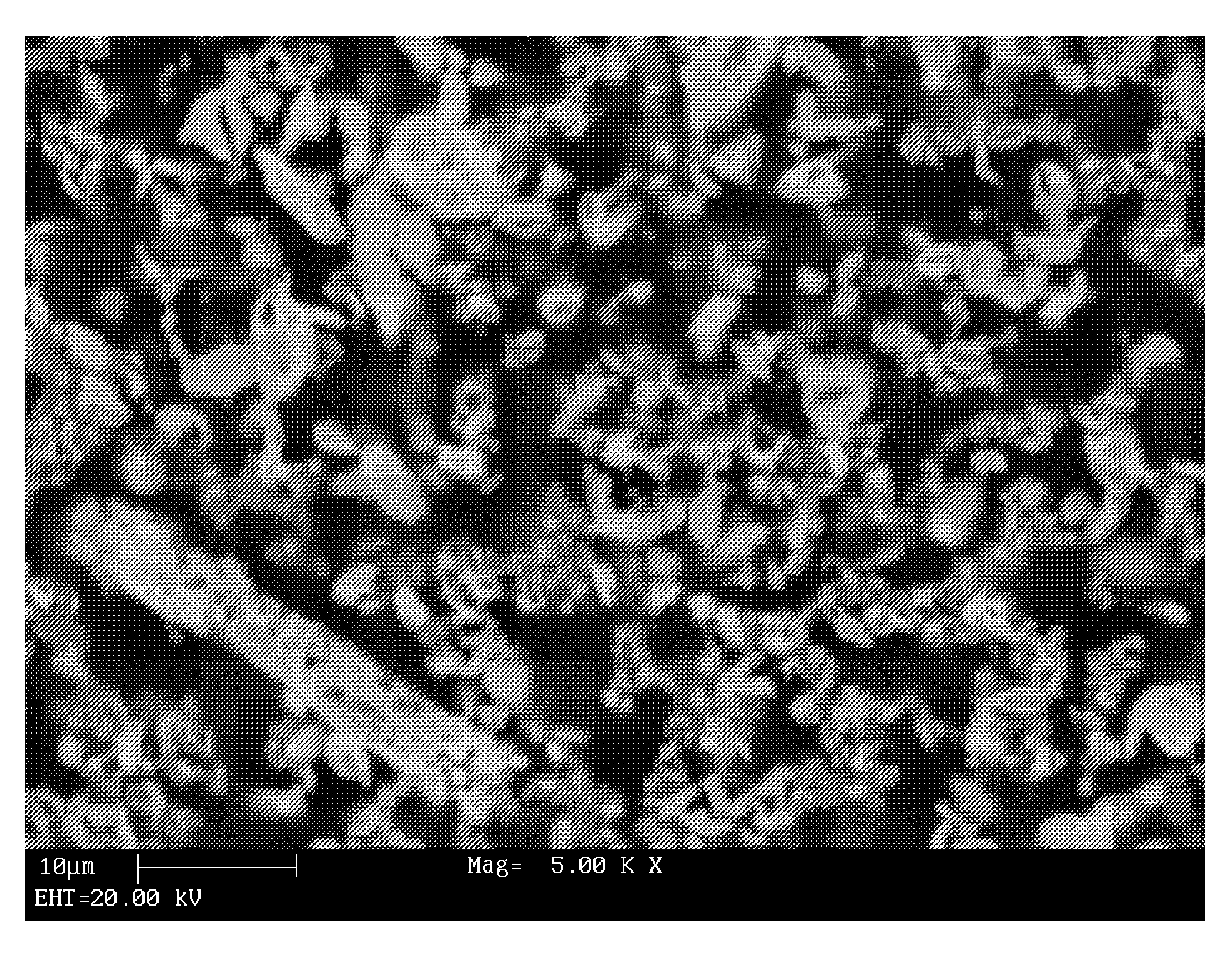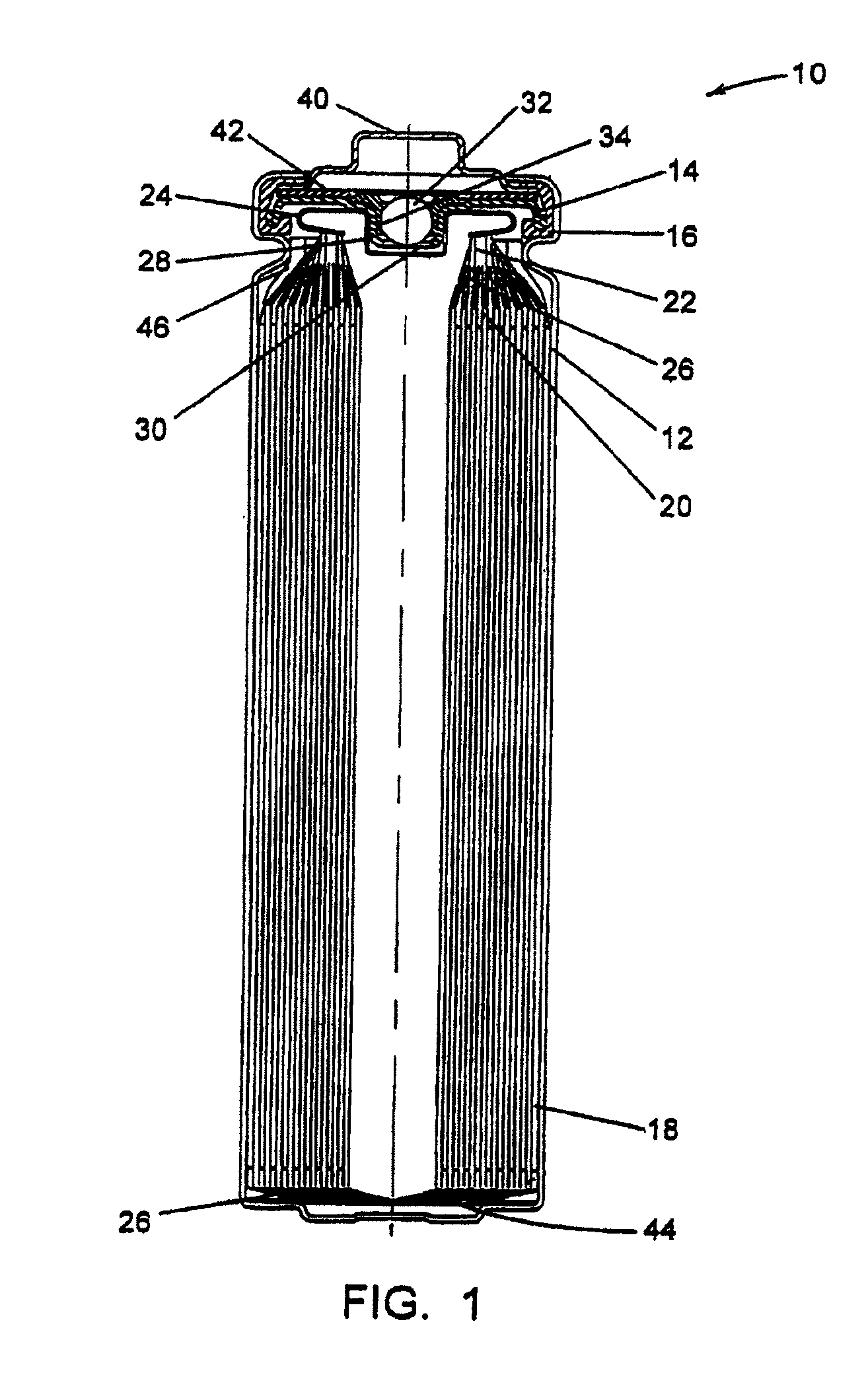Processes for Producing Synthetic Pyrite
a technology of synthetic pyrite and pyrite, which is applied in the direction of non-aqueous electrolyte cells, cell components, oxygen/ozone/oxide/hydroxide, etc., can solve the problems of sacrificing the capacity of low power and low rate discharge, reducing the input of cell active materials in order to maximize high power performance, and reducing the effect of cell active material inputs
- Summary
- Abstract
- Description
- Claims
- Application Information
AI Technical Summary
Benefits of technology
Problems solved by technology
Method used
Image
Examples
example 1
Sulfidation Process
[0140]Synthetic FeS2 is prepared using a sulfidation process in accordance with the present invention as follows: 2.6 grams of nanorust (nano particles of Fe2O3) from Alfa Aesar having an average particle size of about 3 nm and 0.5 grams of elemental sulfur from Alfa Aesar having a particle size of about 1-2 μm are charged to a flask as part of a Labconco rotary evaporator. The system is purged with argon before the introduction of H2S is started. The flask is heated to the desired temperature using an oil bath. Hydrogen sulfide gas (about 6% volume percent in N2) is flowed into the system. The hydrogen sulfide flow may be started before heating or after the oil bath had reached the desired temperature (125-200° C.). After the appropriate exposure time of hydrogen sulfide, about 5-6 hours for the solid masses listed above, the flask was raised out of the oil bath and the head pressure bled off and switched over to argon. When the flask and contents were cool, it w...
example 2
Sulfidation Process
[0144]Synthetic FeS2 of Example 1 is sintered at 462° C. for two hours. Sintering causes the FeS2 particles to grow and produce FeS2 particles having a particle size of about 150 nm and a crystallite size of about 73 mn. FIG. 6 illustrates the X-ray diffraction pattern of the sintered FeS2. In FIG. 6, the X-ray diffraction pattern of the FeS2 from Example 1 (see FIG. 3) is superimposed over the X-ray diffraction pattern of the sintered FeS2. The sintered FeS2 sample is represented by the pattern having the sharper, more intense peaks. In FIG. 6, the asterisk symbols by the peaks at 30°, 59°, and 81° in the pattern for the FeS2 product of Example 1 indicate the presence of marcasite in the unsintered product. As shown in FIG. 6, the sintered FeS2 does not exhibit any peaks attributable to marcasite crystals. Thus, the marcasite crystals appear to have been converted to pyrite crystals.
[0145]Electrical performance of the synthetic FeS2 prepared in Example 2 is analy...
example 3
Sulfidation Process
[0148]Synthetic FeS2 obtained from the process of Example 1 is sintered at 700° C. for 2 days under vacuum at a pressure of about 10−7 torr to provide synthetic FeS2 particles having an average particle size of about 1 to about 2 μm.
PUM
 Login to View More
Login to View More Abstract
Description
Claims
Application Information
 Login to View More
Login to View More - R&D
- Intellectual Property
- Life Sciences
- Materials
- Tech Scout
- Unparalleled Data Quality
- Higher Quality Content
- 60% Fewer Hallucinations
Browse by: Latest US Patents, China's latest patents, Technical Efficacy Thesaurus, Application Domain, Technology Topic, Popular Technical Reports.
© 2025 PatSnap. All rights reserved.Legal|Privacy policy|Modern Slavery Act Transparency Statement|Sitemap|About US| Contact US: help@patsnap.com



